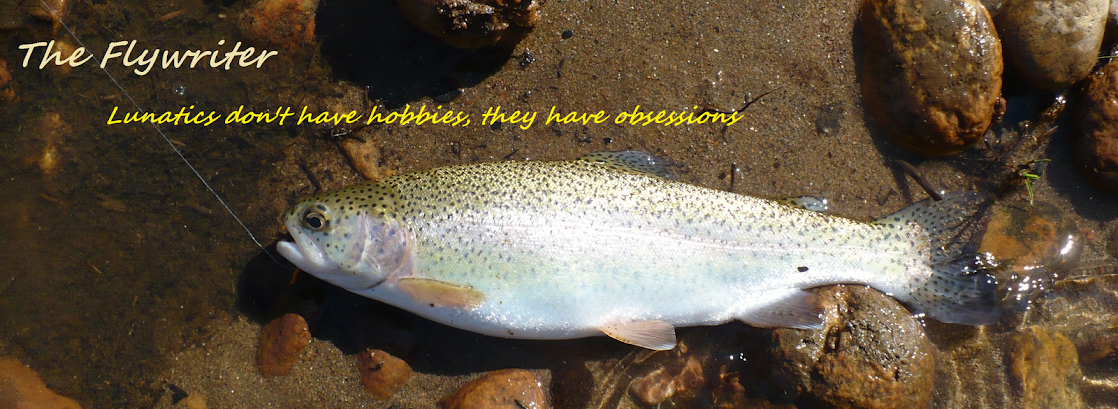When I get to where I'm going, I'm both pleased and wary with what I see. Ringlets of water popping up in rhythmic progression. The trout are awake here, and they're looking upward. Their rises, however, are subtle and controlled. I see no signs of naked aggression. Whatever they're feeding on, they're feeding like gentlemen.
Hmm...this all seems too familiar. The deeper I fall in love with this hobby, the starker the realization that I've gone too far down the road in this obsession to simply fall back into old habits. I've learned that my default setting for surface action can no longer be set to "dry fly." The season, like the bug life, is still young. There will be ample time for the fish to slam hoppers and stimulators. Things are simply more delicate right now.
My default setting is different today - a small but bushy Adams trailed by an RS2. The Adams will serve, I think, a limited purpose today. If I lose sight of the RS2, I'll watch the Adams as an indicator. If it sinks, I'll hit. If something surfaces near it, I'll hit.
With virtually no idea whether I'm doing anything right, I decide to gink the RS2. The tuft of white antron is visible on the water - a small white dot that looks identical to all the other small white dots on the water's surface. But I can follow it. In almost no time, a small brown takes the emerger.
I release the brown back into the current, fearful that his small but vigorous fight has disturbed the fish I've really come here for. I hold my breath and wait. In short order, the frenzy begins anew. Having calculated correctly with the dry/emerger combo, I'm in for something special. In rapid progression, beautiful rainbows dine with abandon on the emerging bugs, and occasionally inhale my imitation.

Like all perfect moments, this one comes quickly to an end. The sun is now higher in the sky, and the trout have eaten their fill. I briefly consider changing my game, maybe trying a different approach to extend the perfection. And then I realize that it's been enough. In fact, it's been just right.
The elevated pathway leads me back to my car. The bank is still steep, the water is still clear, and the big fish are still down below the surface, ready to dart away at the first sight or sound of human intrusion. A challenge for another day.
I'm ready, at long last, to render a verdict: Emergers in March. At least for this angler. I'll leave the mayflies for later...May, perhaps?
Watching trout sip...
The Flywriter







.JPG)
.JPG)